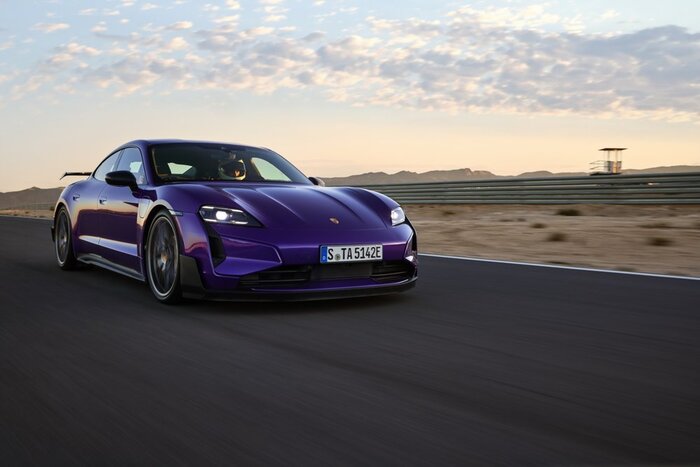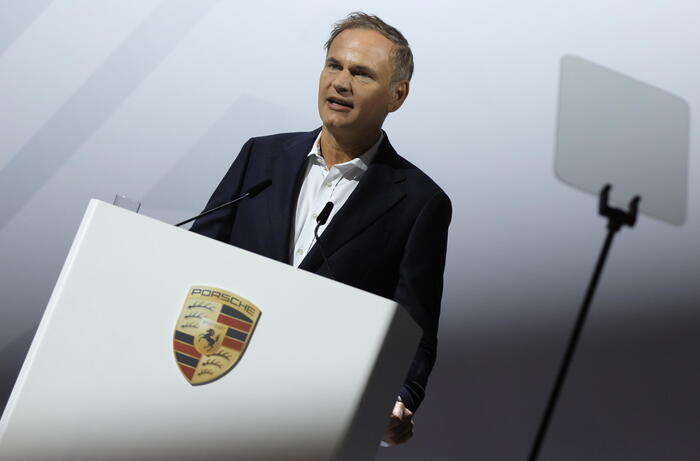The Porsche Taycan was originally to be the number one Tesla fighter, the turbo version started with impressive values: zero to 100 km / h in 3.2 seconds and a range of 381 to 450 kilometers - according to European standards. In the consumption test by the US environmental agency EPA, however, the Taycan Turbo disappointed with a high energy consumption, which led to a significantly shorter range of 323 kilometers.
Before the market launch in the USA, this caused ridicule, especially in the electric car scene, the "EV Bite" portal even gave the Taycan the title of the worst available electric car in the world. The performance version of the Tesla Model S P100 Long Range covered 600 kilometers in the EPA test.
But why is the massive difference? According to Porsche, the other test cycles are responsible for the very different ranges. While the consumption of new models in Europe is measured using the "Worldwide Harmonized Light-Duty Vehicles Test Procedure", WLTP for short, the United States' Environmental Protection Agency (EPA) uses its own method.
US values should include heating and air conditioning
The EPA's so-called multi-cycle method simulates driving in city traffic but also on the highway with different charging states. In addition, the test is intended to determine the influence of temperature and thus also the heating and air conditioning on consumption, after all, the EPA information should apply in all regions of the USA.
"The WLTP cycle ignores factors such as air conditioning that influence EPA levels," said John German of the International Council on Clean Transportation (ICCT), an independent environmental research group that uncovered the diesel scandal in 2015. In the EPA test, this happens for electric cars with a so-called "adjustment factor", which is set to 0.7, by which the range is multiplied. Because, as with the WLTP, the range is determined on a roller test bench - so that power guzzlers such as the air conditioning system are still taken into account, there is the adjustment factor.
Taycan designed for "Porsche-typical" sporty driving
Porsche sees the problem elsewhere. According to the manufacturer, the low speed in the US test was the main cause of the weak result of the Taycan Turbo. In contrast to the WLTP, this reflects more "typical American driving habits with low speeds and low loads", Porsche explained on request.
However, the Taycan was deliberately designed for high efficiency with a "typical Porsche sporty driving style" and therefore achieved better consumption values in the WLTP cycle, which was driven at higher average and maximum speeds. The WLTP cycle actually drives faster, with a top speed of 131 km / h compared to 96 km / h in the US cycle.
The Taycan also performs worse in the WLTP
But even in the WLTP cycle, the Porsche does relatively poorly compared to the competition. If you compare the Taycan with the performance version of the Tesla Model S Long Range in the WLTP cycle, the difference between the two models is already great. Accordingly, the Tesla has a range of 610 kilometers, the Taycan only has a value of 450 kilometers.
The difference between the two models is even clearer in the EPA test. The consumption of the Taycan Turbo in the US test was the equivalent of 30.4 kWh per 100 kilometers, which corresponds to a range of 323 kilometers. The Tesla Model S Long Range consumes only 19.8 kWh for 100 kilometers according to EPA standards, which in turn corresponds to a range of 600 kilometers. "This indicates that Porsche either did not optimize the car for the test or that only certain driving modes were used in the car's WLTP test," explains John German.
Tesla
Tesla Model S
Because both tests also differ with regard to the vehicle settings used, according to German. The EPA test also includes the different selectable driving modes in the test. If you drive in sport mode, the vehicle gets significantly more power and consumption increases. However, the WLTP does not take this additional consumption into account, but only tests the vehicles in normal driving mode. According to German, this is also a possible explanation for the different results.
Tests in the Porsche order showed a higher range
Another hurdle of the EPA test: The test vehicles must be equipped in the way that most customers would buy. Since Porsche offers many special equipment that is traditionally ordered by many customers, the test vehicle must also be equipped with it. However, this increases the vehicle weight and thus also the consumption.
Porsche apparently did not want to let the short range of its new electric flagship take its toll and commissioned its own expert opinion from AMCI Testing. As a result, the Taycan Turbo travels the equivalent of 442 kilometers in southern California traffic - over 100 kilometers further than in the EPA process. However, this test has weaknesses, explains John German. Because information about temperature and traffic density would be missing. "In such a test, however, moderate temperatures and clear roads lead to extremely excessive and unrealistic ranges," says German.
The test was also carried out in normal driving mode and the air conditioning in eco mode. This test therefore does not reflect typical driving behavior, John German sums up, "and leads to a very optimistic range specification - especially for a sports car like the Porsche".








